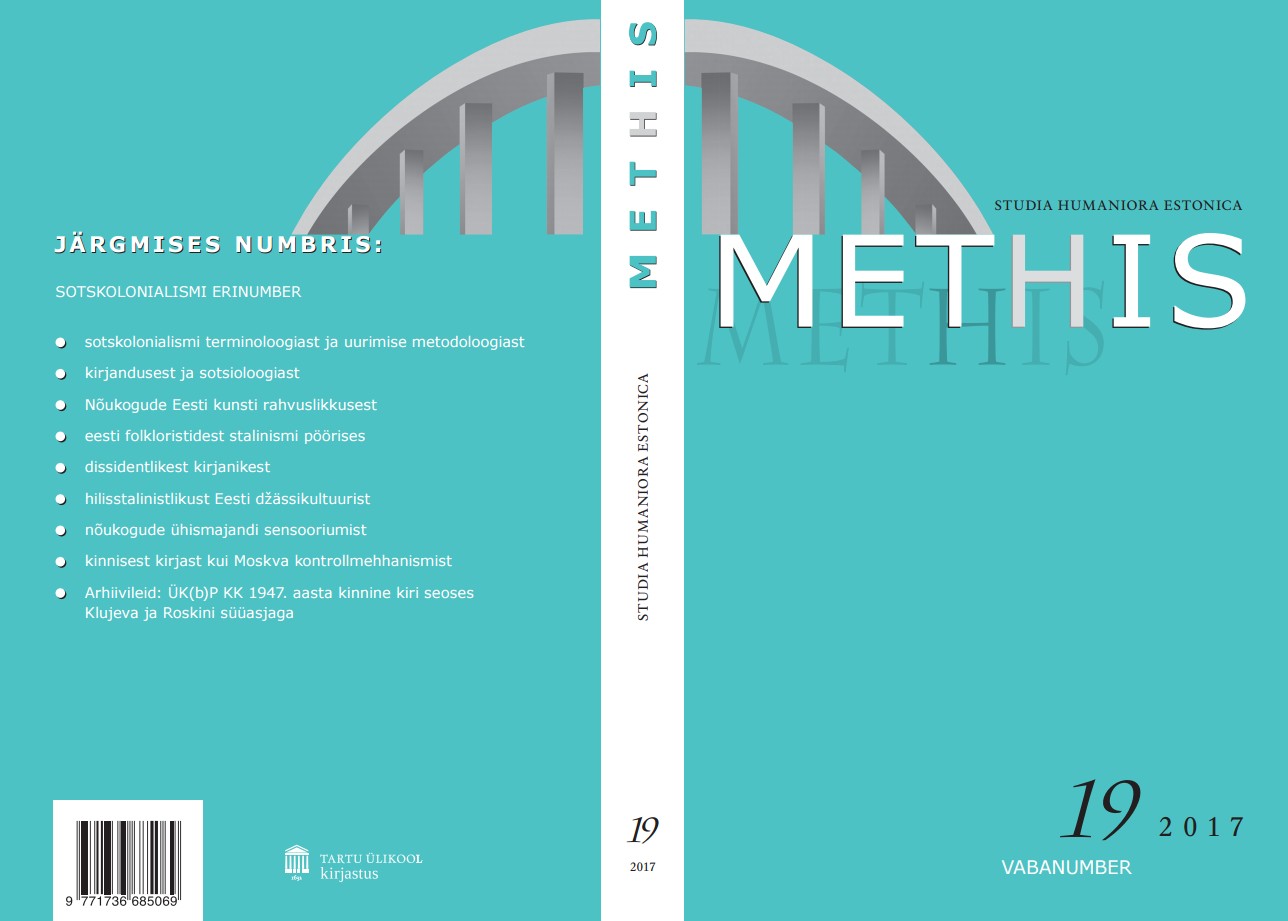Kunst kui tundenakkus: Lev Tolstoi kunstidefinitsioon analüütilises perspektiivis / Art as emotional infectiousness: Lev Tolstoy’s definition of art in the analytical perspective
DOI:
https://doi.org/10.7592/methis.v15i19.13440Keywords:
esteetika, kunstifilosoofia, definitsioonid, emotsioonid, analüütiline filosoofia, aesthetics, art philosophy, definitions, emotions, analytical philosophyAbstract
Artiklis käsitlen Lev Tolstoi kunstiteooria retseptsiooni anglo-ameerika esteetikas. Esiteks formuleerin Tolstoi kunstidefinitsiooni ja selle põhimõistete kanoonilise tõlgenduse. Seejärel analüüsin määratlust ekstensionaalse adekvaatsuse alusel, keskendudes nii tavapäraste kui võimalike uute etteheidete paikapidavuse uurimisele. Kolmandaks püstitan küsimuse, kas Tolstoi kunstidefinitsiooni kriitika ekstensionaalse adekvaatsuse alusel on üldse õigustatud. Väidan, et kuigi senistel Tolstoi meta-esteetilise rehabiliteerimise katsetel esineb puuduseid, paljastab Tolstoi kunstiteooria immanentne kriitika – teooria vaagimine eeldustelt, millelt see kritiseerib oponeerivaid teooriaid –, et ekstensionaalsest adekvaatsusest lähtuv kriitika on õigustatud.
My article discusses Tolstoy’s theory of art in the context of Anglo-American aesthetics. Although Tolstoy’s What is Art touches upon a very wide spectrum of subjects (the place of art in the world, justification of sacrifices made for completing art works, criticism of previous theories of aesthetics, especially of the theory of beauty, defining of art as the expression of feelings, judging of art as such based on the religious knowledge of the era, action mechanisms of beauty/pleasure-centred art, consequences, conditions of the value of art, the relations between art and science, etc.), it has mainly been examined from the aspects of judging and defining of art.
The article focuses on Tolstoy’s definition of art and consists of three notional parts. First, I present the canonical formulation of Tolstoy’s definition of art – something is a work of art if and only if the person, who lives through the feeling(s), causes by external signs that the recipients live through the same feelings. I also present the canonical interpretation of its main concepts – the conditions for creation, transmitting and reception.
Second, I have an analytical insight into the criticism of the canonical treatment, displaying and commenting on, but also responding and complementing the presented arguments. The extensional adequacy-based analysis of Tolstoy’s definition of art shows that although it is possible to eliminate some of the typical criticisms, none of the three necessary conditions was necessary by itself, nor were all three of them sufficient when taken together.
As Tolstoy’s definition of art has sometimes earned quite serious criticism, then, as my third point, I also examine some possibilities for rehabilitating Tolstoy’s theory of art: whether and in what sense can the extensional adequacy-based analysis of Tolstoy’s definition of art be justified at all? So far, the attempts of meta-aesthetic rehabilitation of Tolstoy (e.g., Mounce centrism) have not achieved the expected result. Furthermore, the immanent criticism of Tolstoy’s theory of art (criticism of the theory, based on the prerequisites it uses to criticize its opposing theories) reveals that the extensional adequacy-based criticism of Tolstoy’s definition of art is justified, but it is not necessarily the only yardstick for the theory.


